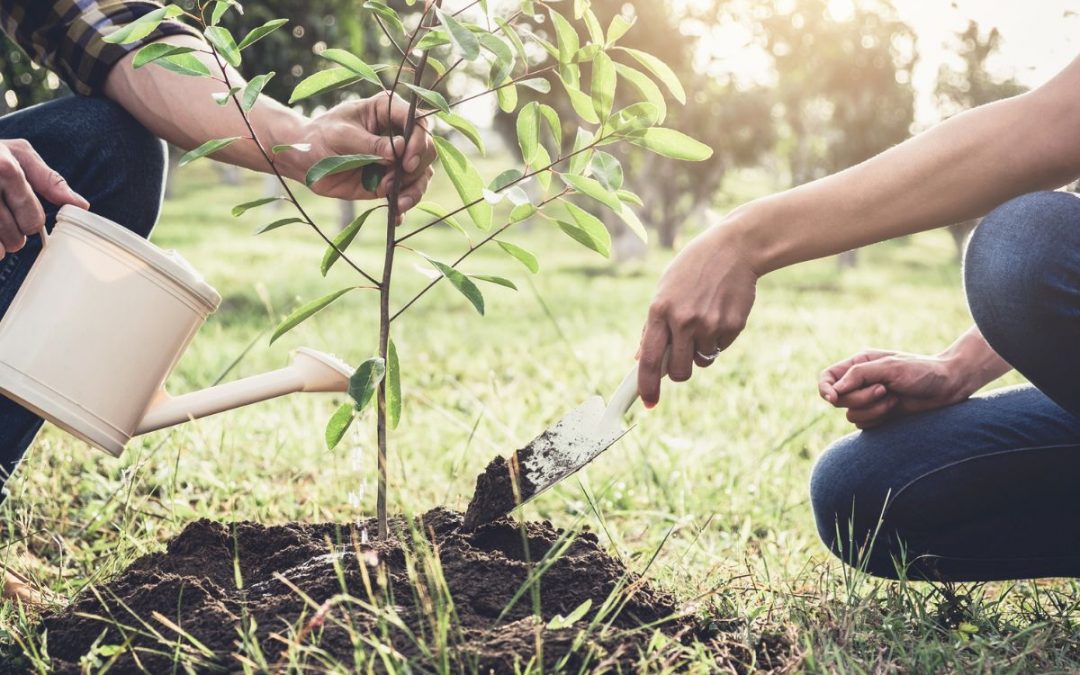Table of Contents
How to Look After Your Newly Planted Trees
Planting trees around your property can provide numerous benefits. Healthy trees can not only beautify your landscape and increase the value of your home, but they can also help you save money on energy by providing a barrier from the cold and shade on hot days.
Planting trees has a number of environmental advantages. Trees naturally help to improve air quality by absorbing harmful pollutants and releasing oxygen back into the atmosphere.
Trees act as natural air purifiers for the planet, so they must be properly maintained. This includes planting new trees with care and giving saplings the extra attention they require to grow strong and well established on your property.
In this guide, we’ll look at how to care for newly planted trees to keep them healthy and beautiful for years to come.
Tips for Caring for Newly Planted Trees
Your newly planted trees and shrubs will be set up for success if you follow the tips listed below!
Root Ball Watering
Watering the root ball is one of the most important tips for caring for newly planted trees. This is an extremely important step because it is critical to the tree’s development and long-term survival. When caring for young trees, the most important thing to remember is to keep the root ball well watered. This means that you must keep the root ball moist but not saturated. The tree’s growth will be hampered if the root ball is too dry or too wet.
Furthermore, using a garden hose or watering bag is one of the best ways to ensure that you are properly watering the root ball. This is due to the fact that each of these tools allows you to control the flow of water, making it easier to ensure that you are not under- or over-watering the root ball.
Keep your distance from the trunks and leaves.
Another important tip is to avoid watering the trunks and leaves. Water the root ball at all times, but avoid watering the trunks and leaves. This can have a negative impact on the tree’s health.
Watering Routine
Every tree is a little different, but they all have the same watering requirements. Young trees should be watered every 2-3 days, with each plant receiving 10-15 gallons per week. Larger trees (those with a trunk diameter of more than 2 inches at chest height) require 8-10 gallons of water per inch of trunk diameter.
Examine the Soil
Another important tip for caring for young trees is to inspect the soil on a regular basis. The soil’s health and condition have a direct impact on a tree’s ability to grow and thrive over time. Simply dig some dirt from the ground directly beneath the canopy to accomplish this. Then, with your fingers, roll the soil around. There is no need to water the soil if it is wet. However, if it is only slightly damp or dry, it is time to water it again.
Examine the Leaves
Although you should not water the leaves, checking their condition can tell you everything you need to know. The appearance of dry or shriveled leaves indicates that the tree is being under-watered.
Mulch should not be undervalued.
Although mulch is not required to grow a tree, it can be very beneficial. This is because mulch is used to help trees retain moisture, ward off weeds, and control soil temperature. However, you must be careful not to add too much mulch, as this can create a cool, damp environment that attracts pests, diseases, and fungi.
Care Instructions for Young Trees in Hot Climates
Although many aspects of tree care are universal, there are additional factors to consider when living in hot climates. Whether you have a particularly hot summer or live in an area where temperatures regularly reach 90 degrees or higher. Here are a few things to remember when caring for young trees in the scorching heat:
Increase your bet on water.
When caring for a newly planted tree in hot weather, one of the most important things you should do is double up on the water. This means that instead of 10-15 gallons per week, new trees should receive 20-30 gallons per week.
Plan Your Watering Schedule
Although it is not necessary to water your tree at the same time every day, doing so is a great way to ensure consistency and provide your tree with a dependable care plan. Furthermore, it is best to water the tree early in the morning or after the sun has set to minimize evaporation and ensure the tree receives the most water possible.
Pruning
Finally, it is usually safe to prune trees in the middle of summer (from mid-August to mid-July). However, you should avoid pruning during periods of extreme heat, as this can be harmful to the tree’s health. This is due to the fact that pruning away foliage can deplete the tree’s moisture reserves, resulting in death.

